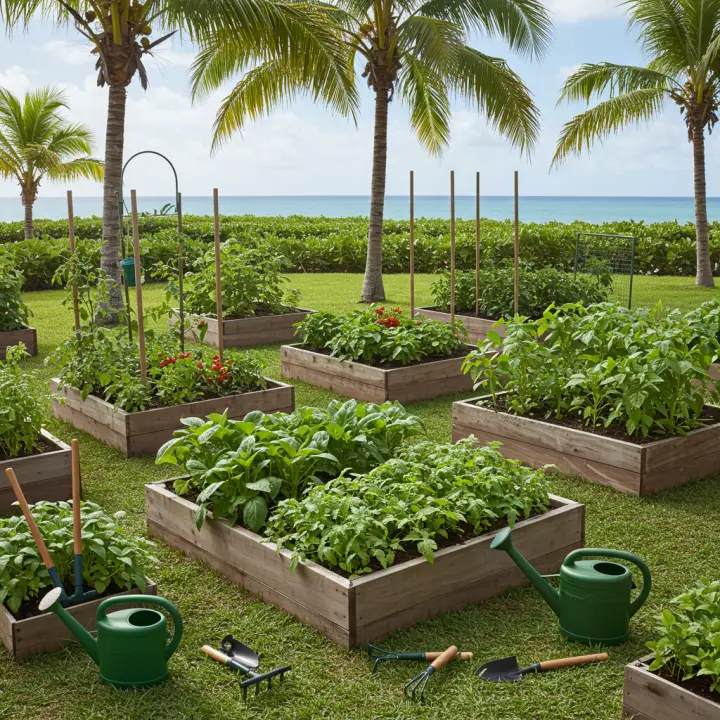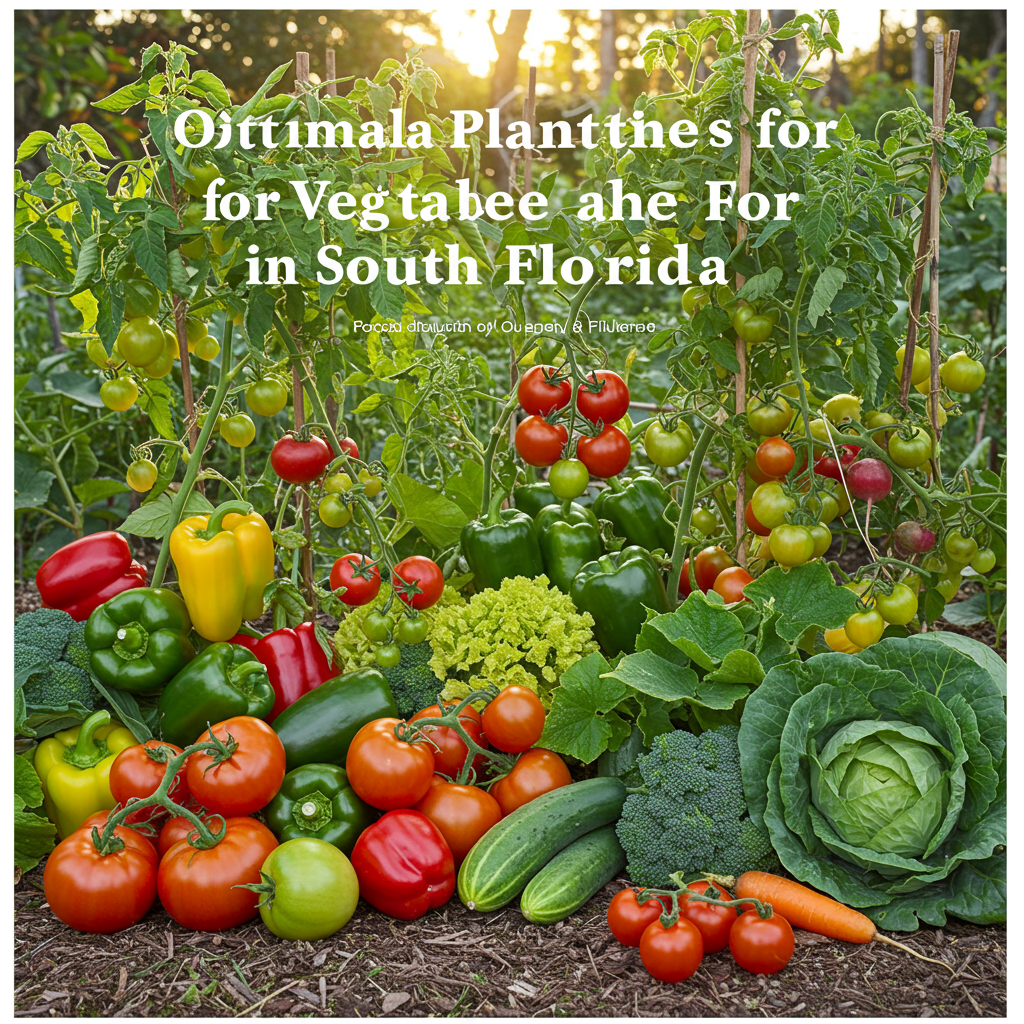Knowing the best time to plant vegetables in South Florida is crucial for a successful harvest. This guide provides a comprehensive overview of planting seasons, ideal vegetable choices, and essential tips for maximizing your garden’s yield in South Florida’s unique subtropical climate.
South Florida’s subtropical climate presents unique opportunities and challenges for vegetable gardening. Unlike temperate regions with four distinct seasons, South Florida gardeners can enjoy year-round harvests with careful planning and selection. This guide explores the optimal planting times for various vegetables, ensuring a thriving garden throughout the year.

Understanding South Florida’s Growing Seasons
South Florida’s climate is categorized as tropical savanna, characterized by hot, wet summers and warm, dry winters. This means the traditional “planting season” is significantly extended, allowing for nearly year-round vegetable gardening. However, choosing the right vegetables for the right time is crucial. We can broadly divide the growing season into two periods:
The Warm Season (Spring/Summer):
Timing: Typically runs from March through October.
Characteristics: High temperatures, abundant rainfall, and high humidity.
Suitable Vegetables: This season favors heat-loving vegetables like tomatoes, peppers, beans, squash, corn, okra, and eggplant.
The Cool Season (Fall/Winter):
Timing: November through February.
Characteristics: Mild temperatures, lower humidity, and less rainfall.
Suitable Vegetables: This period is ideal for cool-season crops like lettuce, broccoli, cauliflower, carrots, radishes, peas, and leafy greens.
Best Vegetables to Plant by Month
To further refine your planting schedule, consider this month-by-month guide:
Spring:
March: Start warm-season vegetables like tomatoes, peppers, beans, and squash.
April: Continue planting warm-season crops. Begin sowing corn and okra.
May: Plant heat-tolerant varieties like eggplant and sweet potatoes.
Summer:
June: Focus on succession planting of beans and squash to ensure a continuous harvest.
July: Plant heat-loving herbs like basil and oregano.
August: Begin preparing for the fall garden by starting seeds indoors for cool-season crops.
Fall:
September: Transition to cool-season vegetables. Plant lettuce, broccoli, and cauliflower.
October: Continue planting cool-season crops. Sow carrots and radishes.
November: Plant peas and leafy greens.
Winter:
December: Enjoy harvesting your cool-season crops. Continue planting leafy greens for a continuous supply.
January: Start seedlings indoors for the spring garden.
February: Begin preparing garden beds for warm-season vegetables.
Essential Gardening Tips for South Florida
Soil Preparation:
South Florida soil tends to be sandy and lacks essential nutrients. Amend the soil with compost or other organic matter to improve drainage, water retention, and fertility.
Watering:
Water deeply and regularly, especially during the dry season. Avoid overwatering, which can lead to root rot.
Pest and Disease Control:
South Florida’s warm, humid climate can attract various pests and diseases. Implement preventative measures such as crop rotation, companion planting, and using organic pest control methods.
Sun Exposure:
Most vegetables require at least six hours of direct sunlight per day. Choose a sunny location for your garden.
Choosing the Right Vegetable Varieties
Selecting varieties specifically adapted to South Florida’s climate is essential for success. Look for heat-tolerant and disease-resistant varieties. Consult your local agricultural extension office or nurseries for recommendations tailored to your area.
FAQs: Best Time to Plant Vegetables in South Florida
Q: Can I grow vegetables year-round in South Florida?
A: Yes, South Florida’s subtropical climate allows for year-round vegetable gardening. However, choosing the right vegetables for the right time is crucial.
Q: What are the best vegetables to plant during the warm season?
A: Tomatoes, peppers, beans, squash, corn, okra, and eggplant are well-suited for the warm season.
Q: When should I plant cool-season vegetables in South Florida?
A: The best time to plant cool-season vegetables is during the fall and winter months, from November through February.
Q: How can I protect my plants from pests and diseases?
A: Implement preventative measures like crop rotation, companion planting, and using organic pest control methods.
Q: What type of soil is best for vegetable gardening in South Florida?
A: Amending sandy soil with compost or other organic matter will greatly improve its suitability for vegetable gardening.
Extending the Growing Season
Several techniques can help extend the growing season even further:
Using Row Covers: Protect plants from cold snaps and insect pests.
Raised Beds: Provide better drainage and warmer soil temperatures.
* Container Gardening: Offers flexibility and allows for moving plants to optimal locations.
Conclusion
Gardening in South Florida can be a rewarding experience with proper planning and execution. By understanding the unique climate and following the guidelines outlined in this guide, you can enjoy a bountiful harvest of fresh, homegrown vegetables throughout the year. Remember to select the right vegetables for the right season, prepare your soil properly, provide adequate water and sunlight, and protect your plants from pests and diseases. With a little effort, your South Florida garden can be a thriving oasis of delicious produce.

